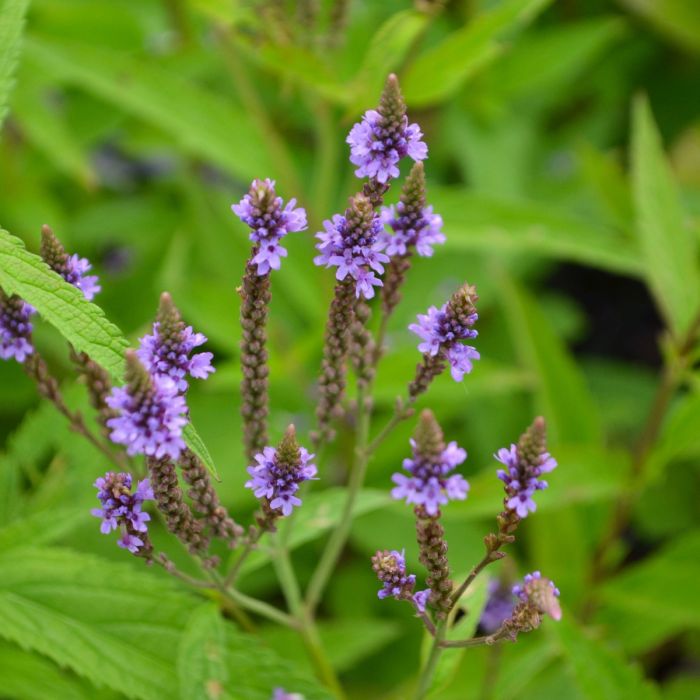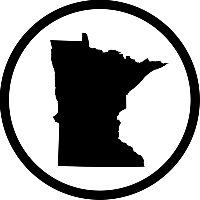Verbena, Blue Vervain 'Minnesota Native'




Out of stock
Coming soon, still growing- Sun Preference
- Full-Sun
- Bloom Time
- July, August, September
Description
Blooms from mid to late summer on multiple 2-6” long spikes of purplish blue flowers. Stiff, upright, clump forming habit. Medium to wet soils.
Minnesota's Largest Selection of Perennials
Discover an unparalleled selection of perennials at Gertens! With the largest variety in Minnesota, we offer endless options of colorful perennials, natives, and pollinator plants to beautify your garden year after year. From vibrant flowers to lush foliage, our perennials are perfect for adding beauty and charm to your outdoor space. Visit Gertens today and see why we're known as Minnesota's Destination Garden Center!
Details
Blue Vervain | Verbena hastata
Plant Height: 3 feet
Flower Height: 4 feet
Spacing: 28 inches
Sunlight: Full Sun
Hardiness Zone: 3a
Other Names: Blue Swamp Verbena
Brand: Gertens
Description:
This variety is a vigorous grower producing volumes of violet-blue flowers on candelabra like spikes rising above the foliage; very impressive when massed; leaves are lance shaped and sharply toothed; thrives in average to wet conditions
Ornamental Features
Blue Vervain features showy spikes of violet flowers with blue overtones rising above the foliage from early summer to early fall. Its serrated pointy leaves remain forest green in color throughout the season.
Landscape Attributes
Blue Vervain is an herbaceous perennial with an upright spreading habit of growth. Its relatively fine texture sets it apart from other garden plants with less refined foliage.
This plant will require occasional maintenance and upkeep, and should be cut back in late fall in preparation for winter. It is a good choice for attracting butterflies to your yard. Gardeners should be aware of the following characteristic(s) that may warrant special consideration;
- Spreading
Blue Vervain is recommended for the following landscape applications;
- Mass Planting
- General Garden Use
- Groundcover
- Naturalizing And Woodland Gardens
- Container Planting
- Bog Gardens
Planting & Growing
Blue Vervain will grow to be about 3 feet tall at maturity extending to 4 feet tall with the flowers, with a spread of 3 feet. When grown in masses or used as a bedding plant, individual plants should be spaced approximately 28 inches apart. Its foliage tends to remain dense right to the ground, not requiring facer plants in front. It grows at a fast rate, and under ideal conditions can be expected to live for approximately 5 years. As an herbaceous perennial, this plant will usually die back to the crown each winter, and will regrow from the base each spring. Be careful not to disturb the crown in late winter when it may not be readily seen!
This plant should only be grown in full sunlight. It is quite adaptable, prefering to grow in average to wet conditions, and will even tolerate some standing water. It is not particular as to soil pH, but grows best in rich soils. It is somewhat tolerant of urban pollution, and will benefit from being planted in a relatively sheltered location. Consider applying a thick mulch around the root zone in winter to protect it in exposed locations or colder microclimates. This species is native to parts of North America. It can be propagated by division.
Blue Vervain is a fine choice for the garden, but it is also a good selection for planting in outdoor pots and containers. With its upright habit of growth, it is best suited for use as a 'thriller' in the 'spiller-thriller-filler' container combination; plant it near the center of the pot, surrounded by smaller plants and those that spill over the edges. It is even sizeable enough that it can be grown alone in a suitable container. Note that when growing plants in outdoor containers and baskets, they may require more frequent waterings than they would in the yard or garden. Be aware that in our climate, most plants cannot be expected to survive the winter if left in containers outdoors, and this plant is no exception. Contact our experts for more information on how to protect it over the winter months.
More Information
| Common Family Name | Verbena |
|---|---|
| Gerten Grown Plants | Gerten Grown Plants |
| MN Native Plants | MN Native Plants |
| Sun Preference | Full-Sun |
| Bloom Time | July, August, September |
| Mature Spread (Range) | 24" - 36" |
| Mature Height (Range) | 37" - 48" |
| USDA Hardiness Zone | 3, 4, 5, 6, 7, 8 |


